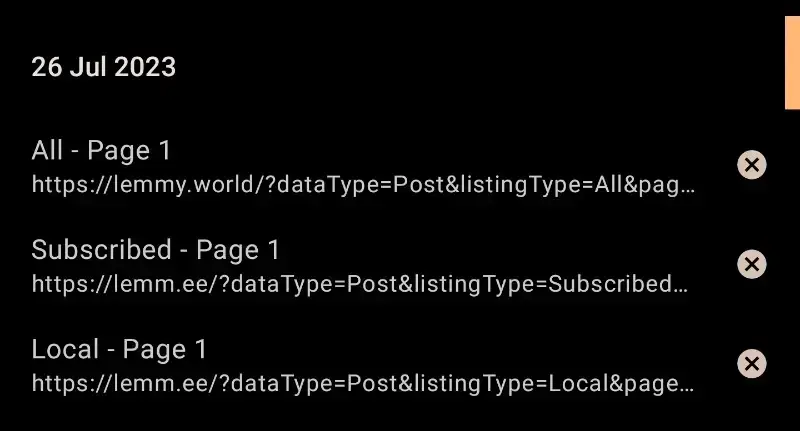👍 yeah from DNS logs it didn't look like requests were actually going to world, good to know it's just visual!
Yeah makes sense for YouTube, Rif used to do it but tbh it was of questionable value as the player was very barebones. YouTube at least opens quickly in its own app.
I guess there's not actually that many direct video links posted on Lemmy, I found one that did work, that player works nicely! Is the detection based on extension or content-type or something?
Maybe the feature request is actually to extract inline video from well known hosts like Imgur? E.g. https://lemm.ee/post/587389
The other obvious one is redgifs, I'm sure you can find an example of that yourself though 👀
I can't reproduce this on any of the 5 test devices I have. What version of Android are you running
Android 12 on a OnePlus 7
I'm in pure black dark mode if that matters
There's a couple small bugs with the long press to view feature:
- Doesn't mark the post as read
- When the image is dismissed it flashes up briefly full screen after the animation plays
I think it would be nice to have a toggle to make the long press behaviour on single tap, it's just a bit slower to have to hold
Bug: Does All actually always go through lemmy.world?


The history page seems to imply the All feed is always fetched from lemmy.world? My home instance is lemm.ee, I would not expect summit to be making requests directly to another unconfigured instance?
Should work even with page numbers, just another box with similar styling to the community name right next to it (or on the right) would be good imo!
Feat: Quicker access to sort


At the moment it takes quite a few taps to switch between sort modes.
This empty space between the community/feed name and the user avatar seems like a nice spot for a sort mode switcher.
Would love to see in-app video support. So when a post links to an Imgur/YouTube/whatever video it gets opened in a native player rather than opening in a chrome webview thing
That's why JS gets hates on just as much as PHP, if not more so these days as JS is fuckin everywhere!
In the long long ago it was reasonably common (particularly on corporate or school/uni networks) to force all web traffic outbound from browsers through a proxy.
They'd then use these proxies to enforce policies (block sites basically) and often cache stuff too, important when internet connections sucked.
So generally proxies sit on the same network as the clients (browsers).
Reverse proxies sit on the same network as the servers.